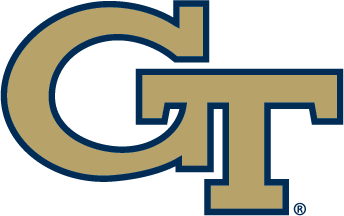Sept. 6, 2017
Matt Winkeljohn | The Good Word –
So, if you love a good gizmo and relish Georgia Tech basketball, here you go . . . Josh Okogie stepped into the future the other day, when shortly after every shot taken by the Tech standout, he was counseled aloud by a computer voice.
In order to start from the here and now and keep it real[-time], it was like Siri or Alexa speaking up. You know, the computerized voices in your phones?
Actually, it was “Noah” handing out the digital advice, as the Yellow Jackets are now working with technology that measures every shot’s entry angle, depth front-to-back and left-right orientation down to a gnat’s tail.
Truth be told, the new contraption in the Zelnak Practice Facility sounds EXACTLY like HAL, the onboard computer spaceship brain that co-starred/steered in Stanley Kubrick’s epic 1968 film 2001: A Space Odyssey.
Make or miss, after each shot, there came monotone audio: “46 . . . 45 . . . 44 . . . 48 . . . “
The sophomore reacted, and not because a time keeper lost track. Rather, Josh was compelled to dial down after clanking the last one because 48 degrees is a tad steep an entry angle for a basketball meant to pass through a basket.
The target angle — according to extensive research by the founders of Tech basketball’s new practice toy — is just shy of 45 degrees. Reams of data back that up, and Okogie respects that, although he’s not a big fan of the audio and usually doesn’t turn it on.
“I like to just shoot however many shots I shoot and I’ll come back later and look at my progress, see whether I’m shooting left or right, how my arc is, see how my depth is doing and adjust from there,” Josh said. “I like it a lot.”
Noah has been around a while, yet where it was simple in its early days while measuring only the arc on free throws, it now measures all shots from all spots in multiple ways.
Based in Athens, Ala., Noah — who allegedly once built quite an ark — has no personality and cannot coach a lick, yet sees everything through video equipment stationed 13 feet above the rim.
That gives feedback instantaneously on every shot unless the audio is turned off — which some players prefer.
Audio on or off, the data from each player’s shooting session is downloaded to his phone and the computers of each member of the Tech coaching staff.
This helps shooters shoot and coaches coach. As trends show up, objective data accumulates and that resonates with humans more than subjective comments made by other humans, er, coaches. Noah can change them, too.
“A swish [shot] is not ideal [in terms of technological evaluation],” said Tech assistant Eric Reveno, who has pushed this project. “Actually, the science behind shooting shows that it’s back a little bit so it’s hitting the back of the rim. The shot that just nicks the back of the rim is the perfect shot.
“I’ve read enough to believe it. The other thing that helps is I think coaches generally have a greater affinity toward a high-arcing shot than we should. The science doesn’t support that.”
Noah’s origins were organic. It all started with venture capitalist and former college physics professor Alan Marty, who years ago was looking to convince his young daughter that she needed to put more arc on her shot. He started in the driveway, with a ladder and a rake, telling her to shoot over it.
Over time, he developed technology — high-speed digital photographs — to measure arc and, eventually, the Iowa State graduate came up with a device that was used by Stanford, where he earned a post-graduate degree.
One of the early testers of the machine was former Golden State Warriors general manager Chris Mullin. Mullin eventually bought one of the machines for the Warriors.
There is now endless data supporting the suggestion that a higher shot will lead to more swished baskets, but that a shot entry angle of between 44-47 degrees will bring more overall makes.
The goal is to foster consistency in shooting, to focus on process over results.
According to the research behind Noah, the best shot will enter the basket 2 inches behind the center of the goal. A ball that ticks the back of the rim is actually ideal.
Noah owner John Carter, a venture capitalist in Athens, Ala., near Tennessee who bought the technology from Marty after reading about it in USA Today before Marty even had an actual product to sell, said it’s OK to draw iron.
He calls the best shot a BRAD — back rim and down.
That 45-degree target goal does not apply to every shot, for as Okogie said, “If you’re working on floaters, you have to shoot a little higher so 45 degrees might not be optimal.”
Carter, who was at Tech last week to check on how the Jackets’ new technology was working in the Zelnak Practice Facility and to help add the system to McCamish Pavilion, backs up Okogie on that.
“Forty-five degrees is the optimal, but if you’re within a degree, either way, you’re going to be in range to reach your optimal [success range],” Carter said. “We’re talking about . . . reasonable-length shots, like 12 feet and beyond.”
Noah has become popular in the NBA, where nearly half the 30 teams have it in place, and six schools in the SEC own the machine in addition to about three dozen Division I college programs and a few hundred high school teams generally in the vicinity of north central Alabama.
Okogie usually doesn’t turn the audio on; he prefers not to here shot-by-shot analysis, and would rather look at data later — and over time — to make adjustments, saying, “You can see where you’re hot and where you’re cold. I learned that my left-to-right is pretty good. I always thought that I was left.”
Reveno is fascinated by the technology of Noah, and was instrumental in helping convince head coach Josh Pastner to buy the technology. Pastner was not as smitten by the technology, let alone the fact that overwhelming evidence exists that most missed shots are short regardless of arc.
“He said, `That’s nice,'” Reveno explained. “And then he said, `How will it make us better?’ . . . The main thing they found from Chris Mullin to Reggie Miller to Steph Curry in testing shooters is the consistency of the shot so guys don’t want to be all over the place.”
“Some of the guys will get into it, and dork out a little bit, and they like to look at their last 1,000 shots . . . It’s not that we think this can be a cure-all for everything. It’s holding yourself accountable.”









